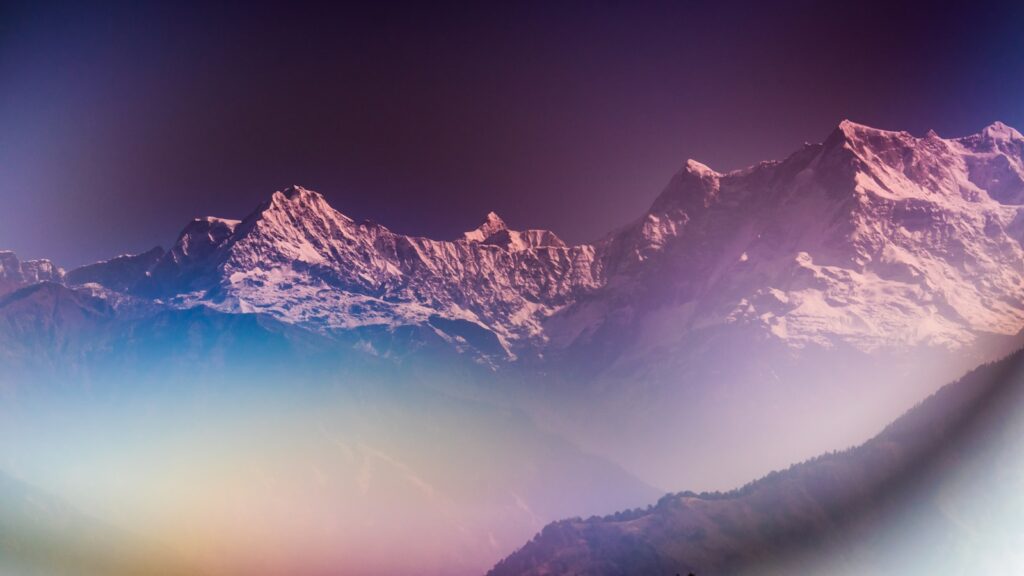Manali sits like a green bowl cupped by jagged snow—inviting, intimidating, honest. If you’ve ever watched a sunrise smear gold across Himalayan ridges and felt your chest tighten with the urge to climb, ABVIMAS in Manali might be the place that turns that urge into skill, confidence, and stories you’ll tell for years. Below, I’ll walk you through what ABVIMAS is, why climbers choose it, the courses on offer, how to prepare, the best local routes, and the safety and environmental responsibilities that come with stepping into high places.
Table of Contents
- Introduction to ABVIMAS and Mountaineering
- Why Choose ABVIMAS for Your Mountaineering Journey?
- Course Offerings at ABVIMAS
- Preparing for Your Mountaineering Expedition
- The Best Mountaineering Experiences Around Manali
- Safety and Environmental Considerations
- Conclusion: Embark on Your Mountaineering Adventure!
Introduction to ABVIMAS and Mountaineering
What is ABVIMAS?
ABVIMAS stands for Atal Bihari Vajpayee Institute of Mountaineering and Allied Sports. Located near Manali, Himachal Pradesh, it’s one of India’s reputable mountaineering institutes offering structured courses, guided expeditions, and alpine-skill training. Think of it as a place where beginners learn essential knots and seasoned climbers refine glacier techniques. Instructors typically come from military, mountaineering institute, or extensive field backgrounds, and they emphasize hands-on practice over textbook theory.

The significance of mountaineering in India
Mountaineering in India is more than summits. It blends sport, culture, and livelihood for many Himalayan communities. From shepherds navigating high pastures to modern climbers tackling technical routes, the mountains shape how people move, work, and celebrate. India’s mountaineering legacy—wartime logistics, high-altitude defense, and grassroots adventure tourism—has driven the development of training centers like ABVIMAS. That mix of heritage and modern technique gives training here a uniquely pragmatic flavor.
Why Choose ABVIMAS for Your Mountaineering Journey?
Expert instructors and experienced trainers
What separates good instruction from great instruction is experience under real mountain conditions. ABVIMAS instructors bring field experience across varied Himalayan terrain—rock faces, glaciers, mixed routes, and alpine weather. They’re skilled at turning complex rope systems into memorable cues. For example, an instructor might explain a belay change by likening rope flow to an everyday action—an analogy that sticks when you’re hanging on a steep face.
Anecdotes matter. Students often report a single demonstration—how to kick a secure step in hard snow or arrest a crevasse fall—was the moment everything clicked. It’s those practical insights, drilled in live scenarios, that you’re paying for.

Safety measures and equipment
Safety at ABVIMAS is embedded in every exercise. Courses stress redundancy: multiple anchors, backup belays, and clear communication protocols on steep ground. Equipment standards are high; expect to use personal harnesses, helmets, technical ice tools, crampons, and well-maintained ropes. Beyond gear, the safety culture includes acclimatization schedules, scenario-based rescue drills, and strict weather briefings.
I once spoke to a trainee who found a simulated crevasse rescue terrifying—until they practiced it and realized the scenario was manageable with training. That shift—from fear to competence—is the core safety promise of any reputable institute.

Course Offerings at ABVIMAS
Basic Mountaineering Course: What to Expect
The Basic Mountaineering Course (BMC) at ABVIMAS is for newcomers who want foundational skills. Expect daily modules covering:
- Rope work: knots, hitches, prusik systems, belaying.
- Rock climbing basics: protection placement, movement, anchors.
- Snow and ice: kicking steps, self-arrest, crampon technique.
- Navigation and weather interpretation.
- Campcraft: pitching high-altitude tents and efficient group routines.
Training is progressive: you’ll start on gentle slopes, move to steeper faces, and finish with a mini-expedition that ties all the skills together. Classroom briefings, practical drills, and real-mountain application help cement learning. By the end, you should be competent on mixed terrain and comfortable with basic rescue techniques.
Advanced Mountaineering Course: Leveling Up Your Skills
If you’ve finished a BMC or already have field experience, the Advanced Mountaineering Course (AMC) dives deeper: multi-pitch climbing, complex belay systems, glacier travel with crevasse rescue proficiency, high-altitude logistics, and expedition planning. Expect more time on technical ice walls, focused rope-team coordination, and simulated high-stress scenarios.
Consider the AMC if you want to lead alpine-style ascents or guide groups in challenging conditions. It’s the bridge between being a competent hill walker and an independent expedition leader.

Preparing for Your Mountaineering Expedition
Physical training and conditioning tips
Mountaineering fitness combines strength, endurance, balance, and mental toughness. Here’s a pragmatic 8–12 week plan you can adapt:
- Weeks 1–4: Build an aerobic base. Aim for 30–60 minutes of steady-state cardio (trail runs, cycling, brisk hiking) 4–5 times per week. Add core work (planks, dead bugs) three times weekly.
- Weeks 5–8: Increase specificity. Do long hikes with a pack (start 6–8 kg and progress), include hill repeats, and add weighted stair climbs. Strength sessions targeting the posterior chain (deadlifts, lunges, step-ups) twice weekly.
- Weeks 9–12: Peak and taper. Simulate a multi-day trek with a full pack on consecutive days. Practice descending—eccentric strength is underrated and helps prevent sore knees.
Don’t neglect flexibility and ankle stability. Small balance drills—single-leg stands, instability board work—translate into better footwork on rock and snow. Nutrition matters: practice eating and hydrating while moving, since appetite and digestion can change at altitude.
Example: a trainee aiming for Friendship Peak might do two long back-to-back hikes with a 10–12 kg pack, followed by a day of skills training. That simulates expedition fatigue and improves recovery.
Gear checklist: What to bring
Gear varies by season and course, but here’s a core checklist:
Basic personal gear:
- Mountaineering boots (double boots for high snow/ice seasons)
- Crampons compatible with boots
- Harness, helmet, belay device, locking carabiners
- Ice axe (technical and walking axes as needed)
- Insulated jacket (down or synthetic), waterproof shell
- Thermal layers, base layers, fleece
- Gloves: thin liners, shell gloves, and heavy insulated gloves
- Headlamp with spare batteries
- Sunglasses (high-UV) and glacier goggles
- Sleeping bag rated to expected temperatures
- Backpack (40–65L depending on course)
- Water bottles and thermos, plus purification tablets or filter
Optional but recommended:
- Trekking poles
- Lightweight stove and fuel (if permitted)
- Personal first-aid kit (blister care, basic meds)
- Repair kit (duct tape, cord, multi-tool)
- High-calorie snacks easy to eat while moving
ABVIMAS typically provides ropes, group technical gear, and course-specific items, but confirm what you must bring. Test your gear before arrival—nothing undermines confidence like boots that pinch on day two.
The Best Mountaineering Experiences Around Manali
Scenic treks and climbing spots near ABVIMAS
Manali’s backyard is a playground of diverse routes. A few local favorites:
- Solang Valley: Ideal for practicing snow skills and introductory ice climbing in winter and spring—accessible and great for short technical sessions.
- Beas Kund: A classic trek that doubles as training for altitude exposure and route finding.
- Hampta Pass: A beautiful traverse connecting lush valleys to stark high-altitude landscapes—excellent for endurance and pack-carry simulations.
- Friendship Peak (near Manali): A popular objective for climbers stepping up from BMC-level training to more committed snow climbs.
- Deo Tibba and adjacent ridges: More technical, with mixed terrain and exposure—suitable for AMC-level practice.
Each spot teaches different micro-skills: Solang focuses on short, steep techniques; Hampta is about long-distance carrying and navigation; Beas Kund offers crevasse-free snow practice.

Cultural experiences in the mountains
Mountaineering here is as much cultural as physical. Manali’s markets hum with yak wool, local apples, and leather goods. Spend an evening at a homestay and you’ll learn about seasonal migration patterns, local cuisine (stews, lentils, mountain vegetables), and traditional crafts like rope-making or basketry. During festivals, villages burst into dance and color—an eye-opener to the rhythms mountain communities follow.
A practical reason to connect with locals: they often know weather patterns, unofficial routes, and local hazards better than any online report. Building rapport can mean safer, richer mountaineering experiences.

Safety and Environmental Considerations
Understanding risks in mountaineering
Mountaineering involves objective and subjective risks. Objective risks include avalanches, rockfall, and sudden weather. Subjective risks stem from human error—poor decisions, inadequate rest, or ego-driven pushes. To manage both:
- Learn objective hazard assessment: read terrain, understand snowpack basics, and heed avalanche bulletins.
- Use decision frameworks: set turnaround times, enforce them, and empower team members to speak up.
- Practice rescue scenarios regularly—muscle memory simplifies action under stress.
Real-world example: a small team pushed past their turnaround time chasing a summit and hit whiteout on descent. Because they’d practiced rope-team protocols and kept communication crisp, they managed a safe, if uncomfortable, descent. Training made the difference.
Leave No Trace principles
Mountains are fragile. Leave No Trace (LNT) is essential. Key LNT practices:
- Pack out what you pack in, including peels, batteries, and tape.
- Use existing campsites when possible; minimize disturbance to vegetation and soil.
- Follow local rules for human waste—many high-traffic areas use designated pits or require waste bags.
- Respect water sources: don’t wash directly in streams; use biodegradable soap and move 70 meters away.
- Minimize fire impact: use stoves rather than open fires; where fires are allowed, keep them small and use established rings.
ABVIMAS courses include environmental briefings. Learn local customs—some sacred areas have rules about access and camping. Practicing LNT keeps the mountains wild and welcoming for those who follow.

Conclusion: Embark on Your Mountaineering Adventure!
Final thoughts and encouragement
Mountaineering with ABVIMAS combines structured skills, local knowledge, and personal grit. Whether you sign up for a Basic course to test the waters or an Advanced program to sharpen technical prowess, the real return is confidence—in rope work, in judgment, and in your ability to handle discomfort calmly. Expect to leave with tangible skills and intangible stories—both matter.
Getting started with ABVIMAS
Ready to begin? Check ABVIMAS’s course schedules, confirm gear lists, and plan a fitness ramp-up that fits your timeframe. Reach out with questions about prerequisites, season-specific gear, or accommodation—good institutes want prepared students, not perfect ones.
Mountains reward respect and preparation. If you’re curious, start small: a weekend workshop, a day hike with a heavy pack, or a conversation with an instructor. Then, let the ridge call you louder next time.
Will you let this season be the one where you learn to move confidently in the high places?
Follow me for more: LinkedIn | Instagram | X | Round Table



